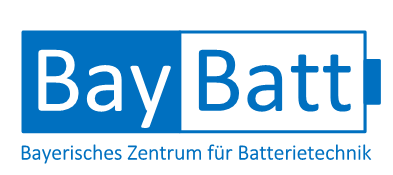Batteries
Dynamic processes with correlated ion and electron transport play a crucial role for energy materials in photovoltaics, fuel cell technology and batteries. The transient structural changes in the materials require in-situ and operando analyses to derive structure-function principles and to characterize undesired side reactions. Both the development of the method and the understanding of the material can benefit from each other. Solid-state NMR spectroscopy is sensitive to both the local structure and the dynamics of the ions in the materials. Due to the nuclei-specific character, this information is also resolved for the different elements. This makes NMR particularly suitable for studying ion mobility in energy materials and associated phase changes, including amorphous and disordered structures such as transient electrode structures or electrolyte-electrode interfaces. The combined information on dynamics and structure allows to correlate ion mobility in different battery components with transient structures and/or dimensionalities (1D->3D) in electrode or solid electrolyte materials.
We develop an in situ/operando NMR platform for a systematic approach with a combination of different NMR investigations. High-resolution 1D and 2D MAS NMR spectroscopy allows to determine the phase composition and its changes with the (dis)charge state, to characterize structural disorder and amorphous phase, as well as local mobilities of the active ions in solid electrolytes, cathodes or anodes. Li and Na are ideal NMR active nuclei with high sensitivities.
So far, in situ/operando NMR spectroscopy has been limited by low resolution. Recently developed designs, such as the jelly roll design (Goward, JACS 2019), now allow high-resolution MAS NMR spectroscopy in situ by rolling up an electrochemical cell. The further development of the "Jelly-Roll" method makes it possible to determine the distribution of the active ions in the various "competing" compartments, i.e. electrolyte, anode and cathode, at different (dis)charging times, as well as to track the formation of solid electrolyte-electrode interfaces. Additional operando investigations applying electric fields during the NMR experiments then allow the characterization of real battery structures and access to transition states.

